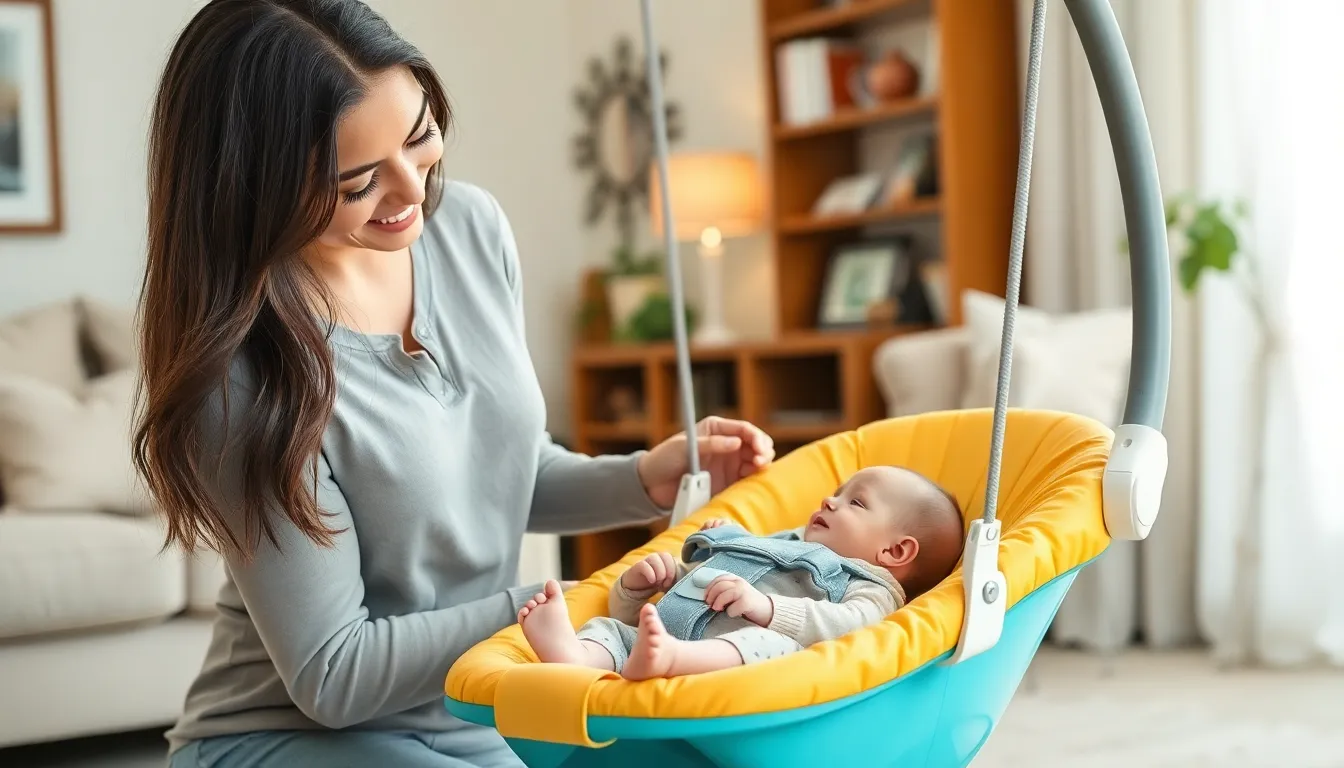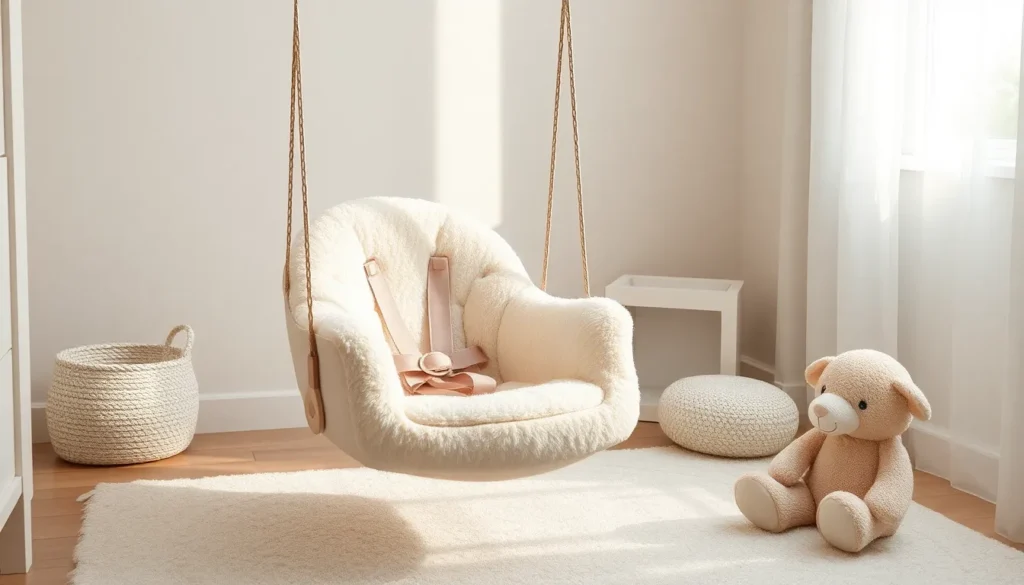Table of Contents
ToggleWhen it comes to parenting, every decision feels like a high-stakes game of chess. One minute you’re pondering the perfect diaper brand, and the next, you’re deep in the rabbit hole of baby gear. Enter the baby swing: a cozy cradle that promises to soothe fussy newborns while giving parents a much-needed breather. But are these swinging wonders actually safe for the tiniest members of the family?
Understanding Baby Swings
Baby swings serve as a valuable tool for many parents looking to soothe their newborns. Familiarity with their types and key features aids in making informed decisions.
Types of Baby Swings
Several types of baby swings exist. Electric swings provide consistent motion, often featuring multiple speed settings. Manual swings require parent interaction to create movement, offering a natural bonding experience. Some swings convert into stationary seats, giving versatility. Others, like portable swings, cater to families on the go. Each type addresses specific needs in various settings.
Key Features to Consider
Important features for baby swings include safety harnesses and weight limits. A reliable safety harness secures infants, preventing accidents. Adjustable recline positions ensure newborns maintain their comfort and support. Battery life matters, as some swings operate on batteries, while others plug into outlets. Additionally, music options entertain while soothing infants. Consider ease of cleaning since messes are inevitable with babies.
Safety Guidelines for Newborns

Baby swings can provide comfort, but adhering to safety guidelines ensures a secure experience for newborns. Parents must consider specific recommendations for safe usage.
Weight and Age Recommendations
Manufacturers typically set weight limits for baby swings. Most models accommodate infants weighing up to 30 pounds. Age guidelines suggest using swings for babies aged 0 to 6 months. Observing these parameters helps prevent safety risks. Always consult the product manual for specific weight thresholds and age limitations. Some swings offer infant inserts for added support, making them more suitable for smaller newborns. Noticing these details aids in selecting the right swing for a child’s developmental stage.
Harness and Safety Features
Effective harness systems significantly enhance safety in baby swings. Most swings include a secure five-point harness to prevent falls. Parents should ensure the harness fits snugly, yet comfortably for their infant. Additionally, safety features like non-slip feet maintain swing stability. Certain swings offer safety locks to prevent accidental folding or collapse. Selecting a swing with these added features minimizes potential hazards. Regularly checking harness integrity and swing maintenance promotes the child’s safety and comfort during use.
Potential Risks Associated with Baby Swings
Baby swings present certain risks that parents need to recognize. Understanding these risks can help ensure the safety and well-being of newborns.
Positional Asphyxia
Positional asphyxia occurs when a baby’s position restricts airflow, leading to potential suffocation. Swinging can create angles that obstruct a newborn’s airway, especially if they slump forward. Parents should secure babies in properly adjusted harnesses to minimize this risk. Frequent checks on a baby’s head and neck position while in a swing are essential. Avoiding long periods of use helps reduce the likelihood of positional asphyxia occurring.
Developmental Concerns
Developmental concerns arise when babies spend excessive time in swings instead of engaging in tummy time and other interactions. Limited muscle development and lack of core strength can result from prolonged swing use. Babies benefit from developmental milestones when lying flat and exploring their environment. Experts advise limiting swing use to short periods, ensuring babies receive adequate time for free movement. Encouraging alternate activities fosters healthy growth and development.
Best Practices for Using Baby Swings
Using baby swings safely enhances their benefits for both newborns and parents. Following specific practices ensures maximum safety and comfort.
Supervised Use
Supervision plays a critical role in baby swing safety. Parents should always be present when their newborns are in the swing. This vigilance allows them to monitor the baby’s position, ensuring the head and neck remain well supported. Regularly checking the harness system ensures it remains secure throughout usage. Keeping an eye on the swing’s placement is also important; avoid edges or stairs to prevent potential falls. Babies can become fussy unexpectedly, so staying nearby enables parents to respond quickly.
Time Limits for Usage
Time limits for swing usage significantly impact a newborn’s development. Experts recommend restricting swing time to 30 minutes at a stretch. Frequent breaks allow infants to experience tummy time and other essential developmental activities. Excessive use can hinder muscle development and body strength. Swings should complement playtime, not replace it. Establishing a regular routine with intervals helps ensure babies remain active and engaged. Following these guidelines promotes healthy growth while enjoying the soothing benefits of the baby swing.
Baby swings can be a valuable tool for soothing newborns and giving parents a much-needed break. However safety should always be a top priority. By understanding the features of different swings and adhering to safety guidelines parents can create a secure environment for their little ones.
Monitoring the baby’s position and limiting swing time are crucial steps in preventing potential risks. With proper usage and supervision baby swings can provide comfort and support without compromising an infant’s well-being. Ultimately informed choices will help parents navigate the complexities of using baby swings safely.





